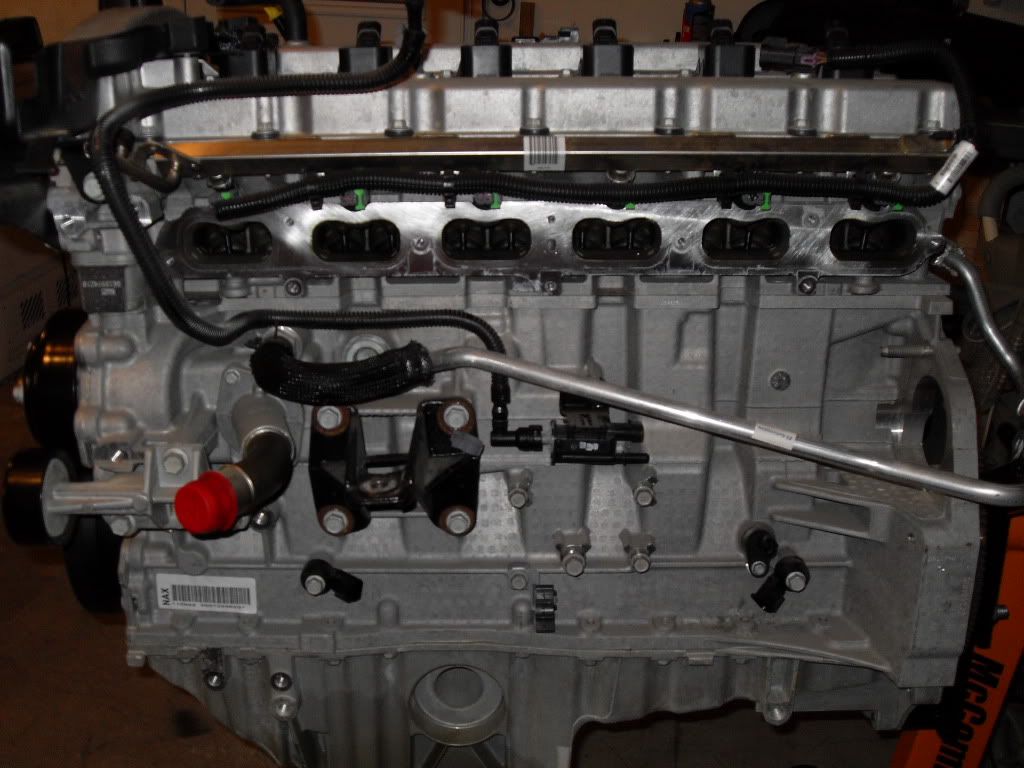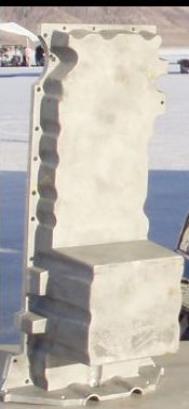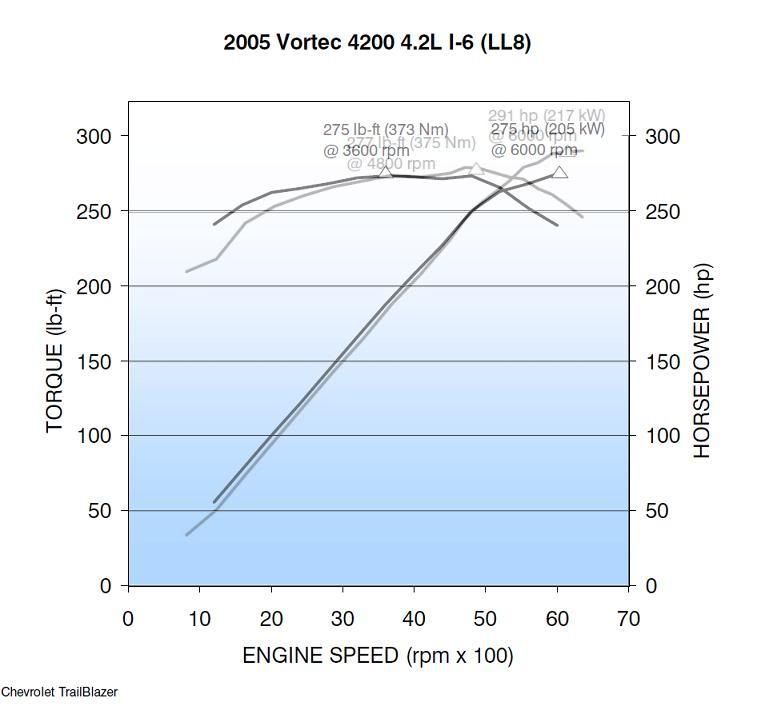I think the 4.0 is a great motor, most get 250,000 miles or more out of it before it needs a rebuild. Strokers are great too, not super hp, but tons of torque. But the basic design of the engine is old, dating back to 1966. The cylinder head is a real limiting factor and the crank harmonic at about 5600 also limits performance. After building the Bonneville 5.0 motor, i began looking around for another power plant that would give me maximum HP per cubic inch. I liked the idea of an inline 6, I looked at Volvo, BMW etc, but but the Chevy Vortec 4200 inline 6 seemed like the best bang for the buck.
I'm still a huge fan of the 4.0 and in the end we decided to turbocharge the Bonneville truck rather than change engines. Goal is 750-800hp.
But the more i looked at the 4200, i liked the idea of it as a power plant for a daily driver. It is rated at 291 hp and 277 ft/lbs of torque. so probably not as much peak torque as a stroker, but the torque curve is pretty flat .
Here is a chassis dyno run of one installed in a Supra.

here is a link to the Supra swap
http://www.vortec4200.com/forum1/viewto ... f=10&t=780
The 4200 is a modern motor, double overhead cams, 4 valves per cylinder, better PCM, etc. it is all aluminum and has a cross flow head. The bottom line is less weight, very good performance and very good MPG. The engine can rev about 1,000 rpm higher than a stroker, so you hae more of a top end, which could allow for taller gears. The exhaust cam has variable timing, this really helps to tweak the performance. The thing that really attracted me what the cost of these engines in the bone yards. generally somewhere between $900-$1,200 this is a similar price to a low mileage late model 4.0 ( if you can find one). But comparing it to a stroker build, i think final costs would be similar. The bottom line is that there is a big demand for good used 4.0 motors and really no demand for trailbalzer motors. So the motors are relatively cheap, and if we assume a average stroker build is in the $2500-3000 range ( check the poll) Than that would be the target for the swap.
An automatic swap would be tuff because you would have to use the GM4l60E trans. The PCM controls both the engine and trans, so it should all work on that end, but I am not sure about the compatibility with the 231 Tcase. I don't have a number for a good boneyard 4l60E. A manual trans is another story, the Colorado and canyon use an aisin trans, so a bellhousing from one of those will let you bolt the engine up to your trans. The flywheel is another story, they never put a manual trans in a trailblazer, so no factory flywheel exists. the 5 cylinder flywheels have a different pattern and will not bolt to a 6 cylinder. A flywheel is available from Self Racing for $475. If you have a 96 or later, the ECM sends data to your gauges, so yo may have to go with a cluster from and older model of your vehicle that had sensors that directly drove your gauges.
The oilpan is another issue, the engines only came with a front sump pan, and all of the jeeps require a rear sump. The pan is cast aluminum, so it can be cut and pieces welded in to make a rear sump. Motor mounts will have to be fabricated, but the chevy motor has arms sticking off either side of the block similar to the Jeep mounts. Here is a picture that shows the oilpan and engine mount.

The thing with the red cap is the lower radiator hose connection. looks like it is in a good place for a jeep.
So in the end i think it could be done for about the same price as a stroker, and by the way the later versions were flex fuel compatible.
With a stroker you are building a stock engine to get maximum performance, with the Vortec you are starting with a stock engine that has performance similar to a stroker, so you have someplace to go with it.
That's my opinion, what do you guys think?








